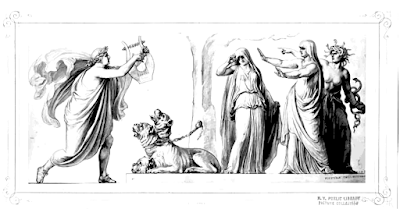Stones of Erasmus — Just plain good writing, teaching, thinking, doing, making, being, dreaming, seeing, feeling, building, creating, reading
12.3.24
Energize Students with Quick Activity: Critical Thinking & Movement for Engagement
 I am an educator and a writer. I was born in Louisiana and I now live in the Big Apple. My heart beats to the rhythm of "Ain't No Place to Pee on Mardi Gras Day". My style is of the hot sauce variety. I love philosophy sprinkles and a hot cup of café au lait.
I am an educator and a writer. I was born in Louisiana and I now live in the Big Apple. My heart beats to the rhythm of "Ain't No Place to Pee on Mardi Gras Day". My style is of the hot sauce variety. I love philosophy sprinkles and a hot cup of café au lait.
10.8.23
Tracking & Analyzing Myth Variations: A Comprehensive Guide to Using Graphic Organizers and Visual Aids in the Classroom
 I am an educator and a writer. I was born in Louisiana and I now live in the Big Apple. My heart beats to the rhythm of "Ain't No Place to Pee on Mardi Gras Day". My style is of the hot sauce variety. I love philosophy sprinkles and a hot cup of café au lait.
I am an educator and a writer. I was born in Louisiana and I now live in the Big Apple. My heart beats to the rhythm of "Ain't No Place to Pee on Mardi Gras Day". My style is of the hot sauce variety. I love philosophy sprinkles and a hot cup of café au lait.
3.8.23
Engaging ELA Lessons: Exploring the Greek Myth of Orpheus and Eurydice with Middle and High School Students
 |
| Stones of Erasmus offers an Educational Download designed to teach the myth of Orpheus and Eurydice |
In the realm of English Language Arts (ELA), the ancient, tragic tale of the Greek myth of Orpheus and Eurydice offers a rich tapestry of themes and lessons for middle and high school students. Stones of Erasmus has created a comprehensive educational resource that provides an engaging, interactive, and distance-learning optimized approach to this timeless tale.
 |
| Orpheus enters the underworld. Image Credit: NYPL Digital Collections |
The story of Orpheus, the divine musician who loses his wife Eurydice twice, is a poignant exploration of love, loss, and the creative power of music and art. Our resource brings this myth to life in the classroom, whether virtual or physical, through a variety of activities and discussion prompts.
Over a three-day lesson plan, students will delve into the myth, analyze its characters and themes, and engage in critical thinking. The resource includes:
1. Art + Literature Connections: Students compare the myth with artwork by renowned artists like Auguste Rodin, fostering a deeper understanding of the story.
2. Reading Cards: This lesson is most effective when supplemented with diverse texts from Edith Hamilton's Mythology, Bulfinch's Mythology, and Ovid's Metamorphoses. However, the resource also includes an introductory dictionary entry on classic Greek and Roman mythology for a comprehensive start.
3. Reading Comprehension and Critical Thinking Questions: These questions encourage students to delve deeper into the text, promoting comprehension and critical thinking.
4. Frayer Model Vocabulary Cards: This visual approach to vocabulary helps students understand terms, geography, and challenging words in the context of the story.
5. Exit Tickets: These provide immediate feedback on students' understanding of the lesson, helping teachers adjust future instruction as needed.
6. Essay Writing Activity: This activity caps off the lesson, allowing students to express their understanding of the myth in a creative way.
Our resource aligns well with the Common Core Standards, particularly the reading literature standard that encourages the analysis of a subject or key scene in two different artistic mediums.
Whether used as a stand-alone lesson or paired with a larger unit on Myth, Percy Jackson and the Lightning Thief, Robert Graves’s Greek Myths, or Edith Hamilton’s Mythology, or Parallel Myths by J.F. Bierlein, this resource offers a comprehensive and engaging exploration of the tragic love story of Orpheus and Eurydice.
For more resources like this, visit the Stones of Erasmus TpT store, and join us on our journey to make ELA education more engaging and interactive.
 I am an educator and a writer. I was born in Louisiana and I now live in the Big Apple. My heart beats to the rhythm of "Ain't No Place to Pee on Mardi Gras Day". My style is of the hot sauce variety. I love philosophy sprinkles and a hot cup of café au lait.
I am an educator and a writer. I was born in Louisiana and I now live in the Big Apple. My heart beats to the rhythm of "Ain't No Place to Pee on Mardi Gras Day". My style is of the hot sauce variety. I love philosophy sprinkles and a hot cup of café au lait.
13.7.23
Unlocking Student Accountability in Group Discussions: The Power of Self-Evaluation in the English Language Arts Classroom
 |
| Empower your ELA class! Foster accountability & reflection with Stones of Erasmus' Self-Evaluation Form. |
Imagine if your classroom could emulate this! With Stones of Erasmus' Self-Evaluation Form for Group Work, it can! This resource offers a teacher guide, a self-evaluation form, a Google Form for group work self-evaluation, and a bonus link to a FREE student note-taking template.
 |
| Exclusively from Stones of Erasmus |
 I am an educator and a writer. I was born in Louisiana and I now live in the Big Apple. My heart beats to the rhythm of "Ain't No Place to Pee on Mardi Gras Day". My style is of the hot sauce variety. I love philosophy sprinkles and a hot cup of café au lait.
I am an educator and a writer. I was born in Louisiana and I now live in the Big Apple. My heart beats to the rhythm of "Ain't No Place to Pee on Mardi Gras Day". My style is of the hot sauce variety. I love philosophy sprinkles and a hot cup of café au lait.
30.6.23
Discovering the Divine Huntress: A Journey into the Realm of Artemis, Or, Diana
In the bustling city of Ephesus, amid the bustling marketplaces and thriving harbors, stood the magnificent Temple of Artemis. One of the Seven Wonders of the Ancient World, this sacred edifice was a testament to the divine Artemis (or Diana), the revered Olympian goddess of the moon and the hunt. A deity of nature and wildlife, her influence, much like her arrows, stretched far and wide. Today, let us rekindle the flickering flames of ancient fires and bring to life the enigmatic goddess and her magnificent temple.
As an educator who designs digital downloads, I've found that the allure of Artemis provides a rich, captivating context for teaching and learning. With this in mind, I've created an engaging, resource-packed digital download that uncovers the mysteries surrounding Artemis and her legendary temple.
.png) |
| Take a Sneak Peak at the Artemis (Or, Diana) Educational Digital Download |
The Quintessence of Artemis
With this comprehensive resource, navigate the mythic landscape of Artemis, or, as the Romans called her, Diana, tracing her origins from a probable river or vegetation goddess to the celestial twin of Apollo. The fascinating intricacies of her cultic status offer fertile ground for intriguing discussions and insights.
An Array of Learning Tools
The resource comes with a plethora of pedagogical tools designed to foster a deep understanding of Artemis and her world. It includes a three-day lesson calendar complete with teacher’s notes, an anchor chart of key characters and places, and student-friendly reading cards exploring Artemis at Ephesus and her representations in literature and art.
The 18-count question bank ensures comprehensive topic coverage and encourages critical thinking. A custom note-taking template fosters active engagement, while the Frayer Model Vocabulary Cards help students visually explore and grasp complex terms and ideas.
Evaluating Understanding and Deepening Knowledge
Exit tickets, collected at the end of each lesson, provide immediate feedback on students’ understanding. As a summative assessment, a writing activity encourages students to delve deeper into the characteristics and symbolism of Artemis, particularly focusing on her as a representation of female power, nature, and fertility.
The included further reading list isn't just a bibliography—it's a portal for deeper exploration and individual or group projects. By assigning different sources to students, you can create an engaging space where learning expands beyond the confines of the classroom.
Fitting Mythology into the Middle and High School English Language Arts Curriculum
Designed with high school students in mind, this Artemis resource fits seamlessly into an English Language Arts Mythology unit. It provides an opportunity to discuss female goddesses, the role of women in society, and fertility symbolism in art and literature.
The resource stands strong as an independent lesson but can also be paired with a broader unit on early Greek myths, primordial stories, Percy Jackson and the Lightning Thief, Robert Graves's Greek Myths, Ovid’s Metamorphoses, or Edith Hamilton’s Mythology.
So, take your students on a mesmerizing journey into the realm of Artemis—a world where gods, goddesses, and the intricacies of the ancient Mediterranean world come to life. Explore more mythology-related resources at Stones of Erasmus, © 2023 stonesoferasmus.com.
 I am an educator and a writer. I was born in Louisiana and I now live in the Big Apple. My heart beats to the rhythm of "Ain't No Place to Pee on Mardi Gras Day". My style is of the hot sauce variety. I love philosophy sprinkles and a hot cup of café au lait.
I am an educator and a writer. I was born in Louisiana and I now live in the Big Apple. My heart beats to the rhythm of "Ain't No Place to Pee on Mardi Gras Day". My style is of the hot sauce variety. I love philosophy sprinkles and a hot cup of café au lait.
10.7.21
Teacher's Summer Diary #2398: On the Tedium of Making Educational Digital Content (And Why a Walk, a Stretch, and a Sip of Water is Essential)
In this post, I talk about making educational resources for the middle and high school classroom and why distraction is my friendly passenger (although they don't always feel so friendly).
As per my last email (don't you hate it when you receive a message that begins that way) — or, shall I say, post — I've learned some new tips. First — there is beauty in
 |
| A message spray-painted on a side of a train car. |
small details. But my iPhone finds it challenging to capture the subtle beauty, so you'll have to contend with the bigger picture.I read a quote today that I like — about achievement — "Before the gates of excellence, the high gods have placed sweat.”
I'm attempting to complete a monumental task this week, and I feel overwhelmed. I want to expand the teaching resources I created under my @stonesoferasmus brand — I have to go and proofread my inventory of 137 digital downloads I've created. I like the “making part” of the process — using design skills and creating incredible resources that middle and high school students can use. It's just very time-consuming. So to inspire me, I take long walks — hence the photos you see — and eat healthy — and stretch. Also — I got a bigger monitor for my computer. OMG. Having a large screen to work on makes a huge difference when creating digital stuff. OMG.
My goal is to have 200 products reviewed and created by the end of Summer. And on top of that, I'm taking a class on Special Education and Differentiation at Hunter College. The course is good — it solidifies some things I already knew about teaching and has already given me good ideas to move forward. Next year I'm teaching a section of Eighth Grade English, a World Religions class, a New York City history class — paired with Tenth and Eleventh graders in a combined section. Whew. I better get to planning. But. Oh. I see a bird in a tree. Ohh. Let me check this out. *Loses thirty minutes*. By the way, @kfs0520, is the last picture in this post an excellent example of Nantucket Red? Inquiring minds want to know.

 I am an educator and a writer. I was born in Louisiana and I now live in the Big Apple. My heart beats to the rhythm of "Ain't No Place to Pee on Mardi Gras Day". My style is of the hot sauce variety. I love philosophy sprinkles and a hot cup of café au lait.
I am an educator and a writer. I was born in Louisiana and I now live in the Big Apple. My heart beats to the rhythm of "Ain't No Place to Pee on Mardi Gras Day". My style is of the hot sauce variety. I love philosophy sprinkles and a hot cup of café au lait.
7.3.21
Subject: Hello, March! March is for Mars! And It's Springtime in TeacherLandia (And I Have a Freebie for You)
 |
| It's March, and I've been teaching — either from home or in a classroom. Hey, Y'all! |
It's March. And what that means for me is that I get to ask my students, "What god from mythology is the month of March named for?" And, you know what? Don't feel bad if you can't immediately come up with the correct answer. It's one of those questions that is obvious once you know the answer. *Spoiler Alert* The Greek god Mars (Or Ares in Latin). And I have a lesson for you. I have a freebie that helps students build vocabulary through Greek and Roman mythology. Myth is to Language what Recipes are to Food! You cannot have one without the other.
The Greek god Mars (Or Ares in Latin). And I have a lesson for you. I have a freebie that helps students build vocabulary through Greek and Roman mythology. Myth is to Language what Recipes are to Food! You cannot have one without the other.
FREEBIE!: All About Mythology for the Middle and High School Set
I guess I am obsessed with myth. It's probably because mythology is just really cool, and I am determined to not make learning about myths just a Percy Jackson thing. Myths are actually exquisite artifacts to teach in High School (even though they get relegated to elementary and early middle school curricula). I just made a ton of myth-related resources in my Teachers Pay Teachers store. And to celebrate March and Spring (and the god Mars), I made my dazzling lesson on Prometheus totally free. So you can see a sneak peek of what I am doing in the realm of educational digital resources for middle and high school students. Some of the best things I have made related to mythology are designed for the late middle and high school classrooms. And I think that's really cool. And oh, if you are more of an Amazon person, I have a store there too!
Prometheus Bound for the Classroom
It's based on the story of Prometheus, the Titan who befriended Zeus. His name means “forethought,” which is kinda funny only when you realize his brother Epimetheus's name means “afterthought.” This gets even funnier when you realize that according to the myth, Prometheus had the forethought to warn his brother, "OK! Zeus is going to gift you with a beautiful woman named Pandora! Don't accept!" But since he was an afterthought — when the time came — Zeus said, "OK. Here is a gift for you, Epimetheus." And the rest is history!
And Why New Orleans is a Decent Inspiration for Mythology
I am originally from New Orleans. It’s where I got my first jolt of mythology because during Mardi Gras season — all the Krewes are made up of references to Greek mythology. You have the Krewe of Orpheus and the Mystic Krewe of Momus and Comus and Rex (Latin, not Greek, I know). And having read lots of William Faulkner, you know life in the south can mirror a Greek tragedy (or comedy!).
How do I keep it woke? How do I make ancient Greek or Latin myths relevant to living in the Americas in 2021? Easy — lots and lots of text-to-text and text-to-world connections. Did you know that March is named after a god? It's because of Greek and Norse mythology that the days of the weeks are what they are? The more you know, right?
So keep a lookout for a new product I am creating based on New Orleans, Mardi Gras, and Mythology!
Thanks for reading my blog. It's been a labor of love for over ten years. Can you believe it! XOXOXOXO
Greig Roselli (from Stones of Erasmus)
 I am an educator and a writer. I was born in Louisiana and I now live in the Big Apple. My heart beats to the rhythm of "Ain't No Place to Pee on Mardi Gras Day". My style is of the hot sauce variety. I love philosophy sprinkles and a hot cup of café au lait.
I am an educator and a writer. I was born in Louisiana and I now live in the Big Apple. My heart beats to the rhythm of "Ain't No Place to Pee on Mardi Gras Day". My style is of the hot sauce variety. I love philosophy sprinkles and a hot cup of café au lait.





